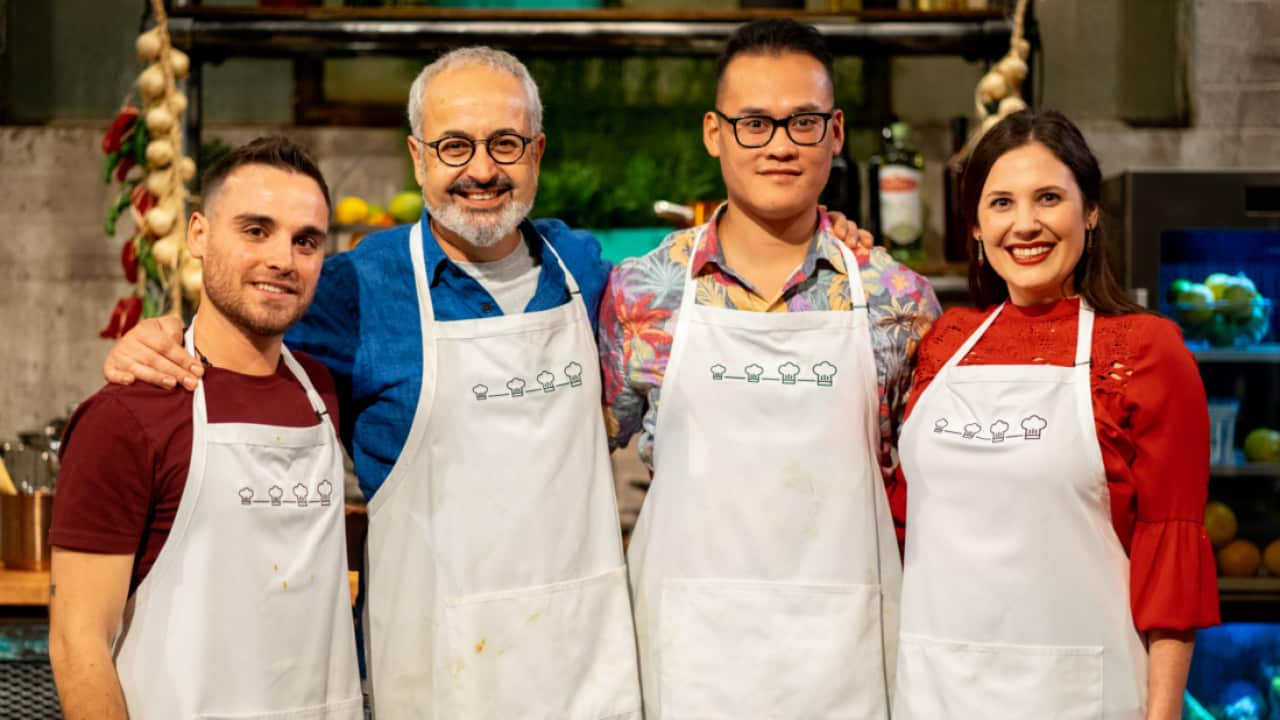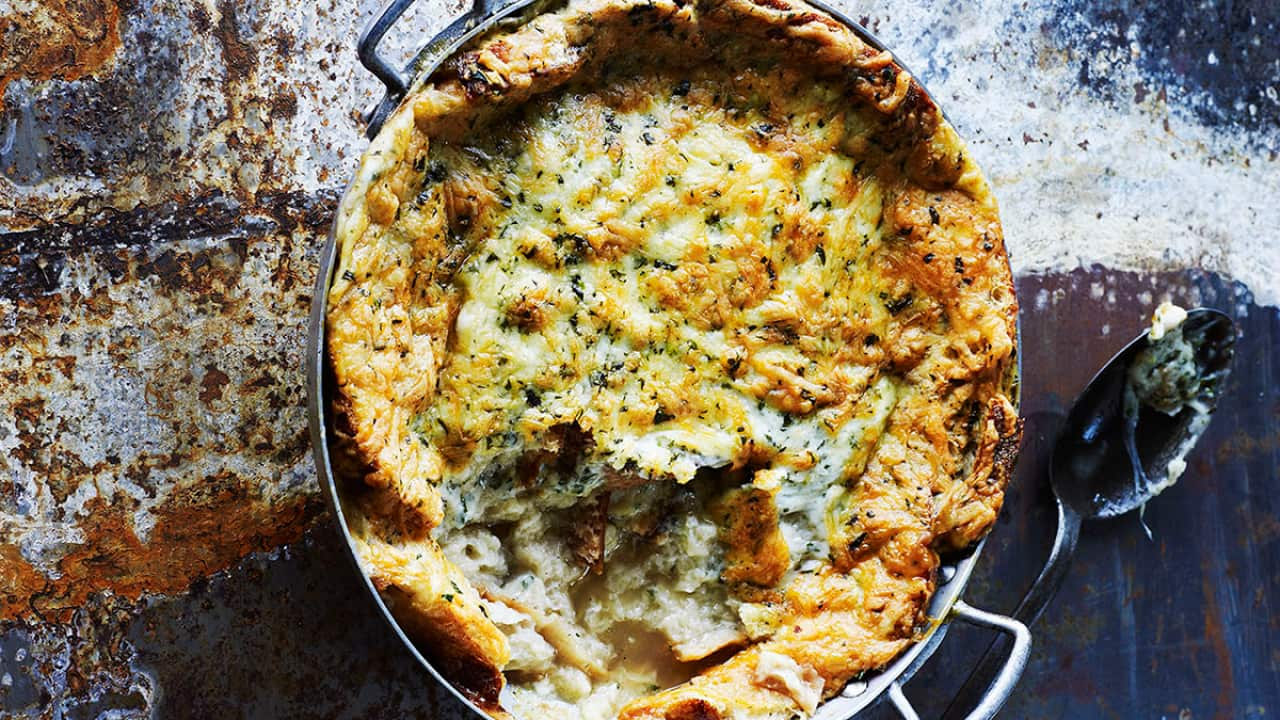--- Explore Australia's diverse cuisines on . Stream it free now on SBS On Demand. ---
"What’s that mouldy thing?" customers would ask Pino Tomini Foresti, 63, pointing to a leg of prosciutto behind the counter. "You don’t eat that do you?"
A lot has changed since the seventh-generation butcher opened Pinos' Dolce Vita in Kogarah, Sydney, in 1978. It seems inconceivable these days that you'd attend an Aussie backyard barbecue and not have an antipasto platter overflowing with marinated olives, salami and cheese to snack on. But it wasn't that long ago that it was only deemed fit for so-called 'Continentals'.

No shortage of good meat here. Source: Pinos' Dolce Vita Fine Foods
Pinos' Dolce Vita was a magnet for new migrants who couldn't find the cuts of meat they needed to make dishes such as cotoletta (veal breaded cutlet) and saltimbocca (veal wrapped with ham and sage, and marinated in wine, oil or salt) so they'd travel to the young Italian butcher.
THE JOY OF ITALIAN COOKING

What cooking Italian food means to me
Tomini Foresti would make smallgoods too. He would prepare fresh salami so people could dry them out at home in the winter like they'd done for generations on Italian farms. My Nonna was one of them, hanging sausages from the beams in the garage and lighting a fire underneath to give them that smoky flavour – until a neighbour saw the smoke, called the fire brigade and a kindly fireman told her that doing that wasn't exactly legal in her new country.
Now, she buys her salami pre-dried just like everyone else.

The paradox of choice. Source: Pinos' Dolce Vita Fine Foods
"Now they come in and ask me for lardo!" he says beaming. "In the beginning, most people didn't know what guanciale was, and that's one of the key ingredients in carbonara. They would come in and ask for bacon; they would use cream. The challenge was educating them," Foresti says.
"People would say, 'I had great meatballs at this restaurant, what meat do I need to make them?' You can't use topside; the right cut will need to have a little fat like brisket or flank, so it's nice and moist," Foresti says.

Simple but oh so tasty. Source: Pinos' Dolce Vita Fine Foods
ITALIAN FOOD RECIPES, ANYONE?

Can't get to Italy? This blogger might be your next best thing
When the family business burned down due to an electrical fault in 2016, Tomini Foresti initially decided not to rebuild, but his customers had other plans. They kept asking for him to reopen and eventually, he changed his mind.
The new store opened in late 2018 and comprises a deli, butcher shop and café. He says he makes about five tonnes of smallgoods a week at a processing unit offsite.
"It felt really good that people wanted us to come back," Tomini Foresti says. "We're more than just a deli; we're a part of the community."

Inside the new Pinos' Dolce Vita Fine Foods store. Source: Pinos' Dolce Vita Fine Foods
"It became a benchmark place to shop," says general manager Anthony Musarra. "It offered dependable access to those deli products and Italian wines you couldn't get [in Australia]. People who visited from interstate would shop here."
After a four year hiatus, what was just a deli re-opened as a precinct in December 2018. There are now espresso, rooftop and cellar wine bars, with a restaurant due to open in May.
"King and Godfree has always been about community and hospitality, and now the space suits people's needs across different occasions," Musarra says. "We listened to what people wanted and evolved."
New Farm Deli in Brisbane is another hub that has undergone an evolution. Maria Anello, 58, began a part-time job there in 1975 at the age of 15 and by the time she was 17, she and her parents had bought the business.
At the time, it was a "hole-in-the-wall mixed business" that also sold sliced mortadella, olives, salami and cheese, Anello says.
"Italians made up 95 per cent of our customers, but by 1988 when we had the World Expo in Brisbane, things changed. It opened people's minds up, they wanted to try new things, and continental food was fashionable,” Anello says.
She was confident enough in her clientele to create a café, offering the dishes she ate at home and proper Italian coffee. It was a risk though, she says, adding that in 1992, Brisbane was still "a big country town" and people told her it would never work.
"There were no cafes as we know it now. I questioned whether it was the right thing to invest in an espresso machine. You'd go out for coffee, and it was just powdered coffee," Anello says.
“Within four years, there was a café on every corner. We feel that we started something."
Photographs supplied by Pinos' Dolce Vita and King and Godfree.
GLORIOUS ITALIAN CUISINE

No oven required for these Italian pizzette










